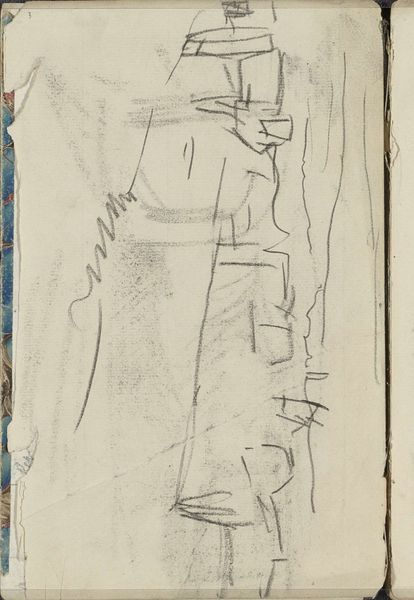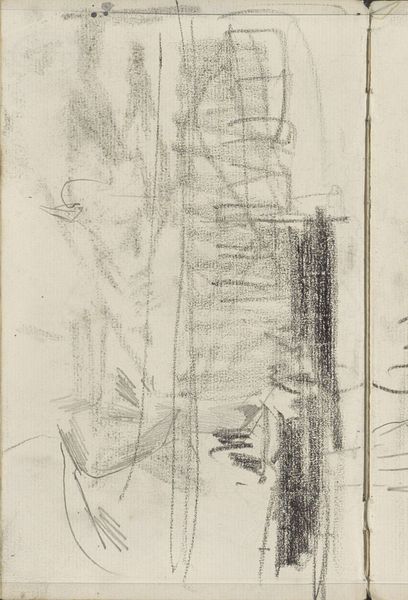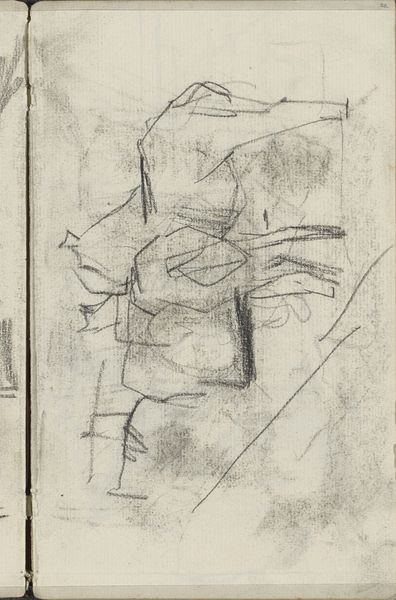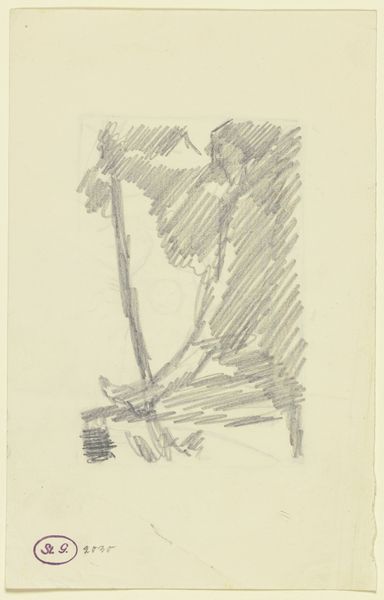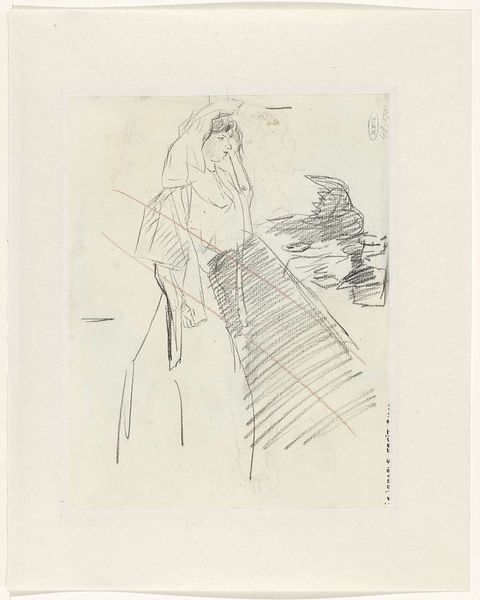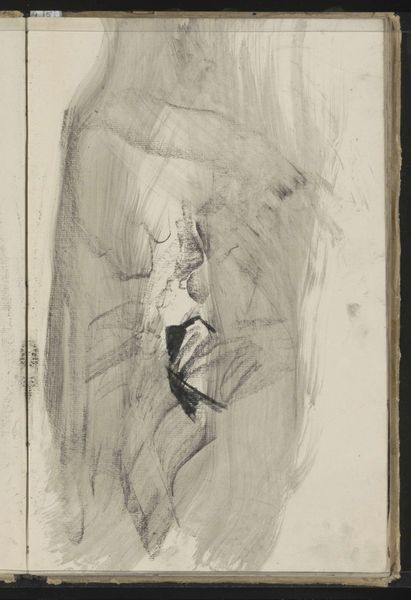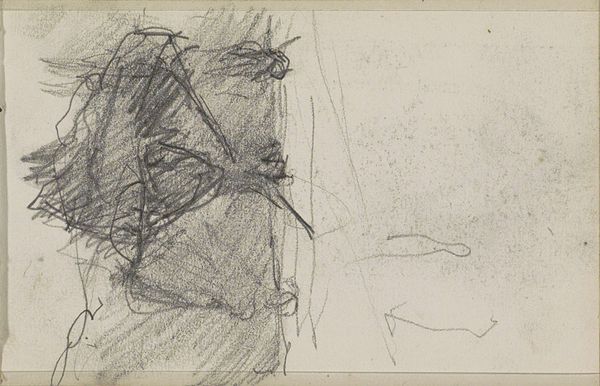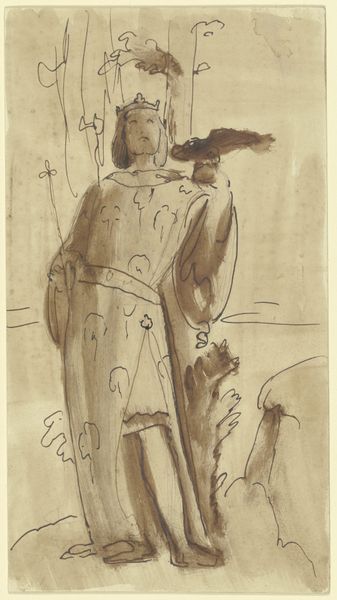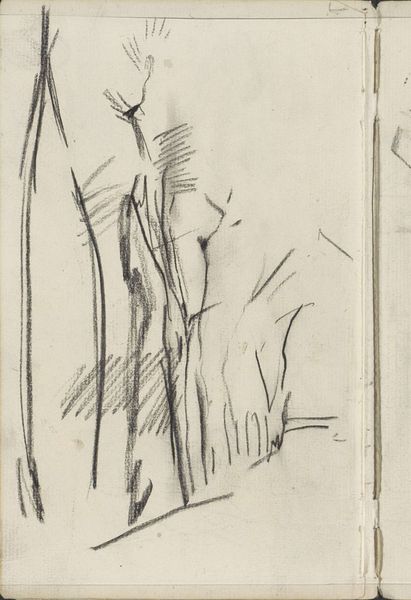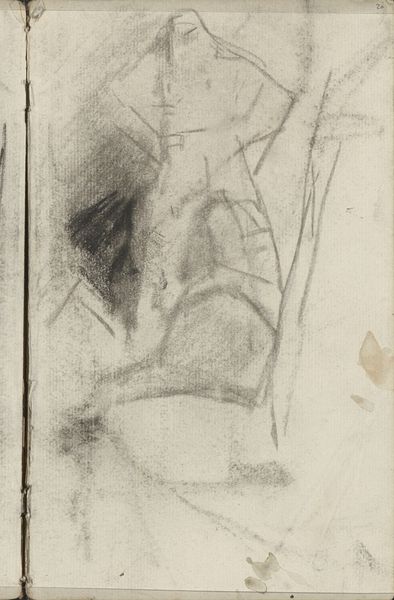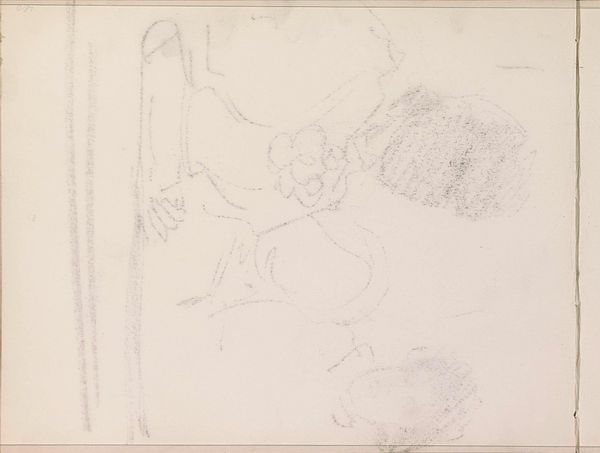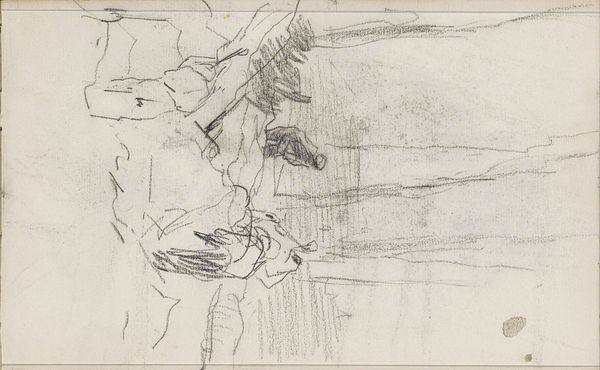
drawing, pencil, graphite
#
portrait
#
drawing
#
amateur sketch
#
toned paper
#
light pencil work
#
pencil sketch
#
incomplete sketchy
#
figuration
#
personal sketchbook
#
ink drawing experimentation
#
pen-ink sketch
#
pencil
#
graphite
#
sketchbook drawing
#
sketchbook art
Dimensions: height 156 mm, width 154 mm
Copyright: Rijks Museum: Open Domain
Curator: Here at the Rijksmuseum, we have a graphite and pencil drawing by Johannes Tavenraat, entitled "Huis (deel van een grotere voorstelling)", made sometime between 1840 and 1880. Editor: It’s faint. Looking at this study on toned paper, my first thought is the materiality, this light pencil work. You can almost feel the artist figuring it out, like he's testing the possibilities of the pencil. Curator: Exactly. These kind of informal sketches gave artists, especially in the 19th century, a space to experiment free from the constraints of formal commissions and public expectations. Sketchbooks and personal studies provided an important space, an escape for the artist. Editor: Absolutely. And it’s fascinating to think about how this humble material, graphite, which became more widely available through industrialization, allowed artists like Tavenraat to explore their world so directly. Graphite democratized drawing in a way—less precious, more accessible. Curator: This brings up a great point. The social context matters: cheaper, mass-produced materials changed art production. Editor: What's particularly striking is the raw quality; there’s nothing polished or performative about it. It's the artist wrestling with form, the labour visible on the page. Curator: These were often used by artists to solidify architectural understanding to deploy for later works, but beyond its preparatory role, what can this tell us about its public consumption and reception during this era? Was art like this also considered worthy for the common person? Editor: Good question. Well, the fact that something this sketchy made its way into the Rijksmuseum suggests changing tastes or reevaluations of artistic value. Or maybe, there’s something universally appealing about this peek behind the curtain. It makes you wonder about its production. Curator: The museum validates that it has value today and perhaps it did then for certain groups who enjoyed "unfinished" drawings. It really brings the production, process, and person together, which as you know is where my interests converge. Editor: Right, and for me, the allure is precisely in its imperfection. It's like glimpsing a fleeting thought.
Comments
No comments
Be the first to comment and join the conversation on the ultimate creative platform.
